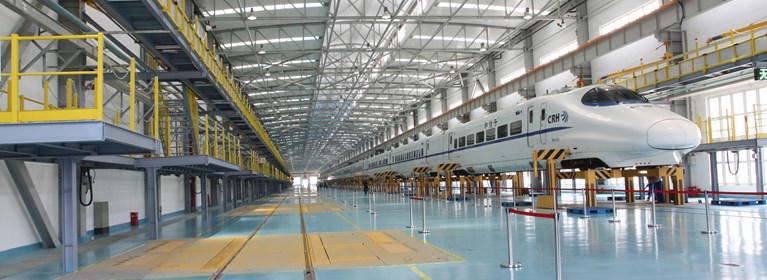
Monorail Collision Avoidance and Distance Detection Systems
Power & Motion Technology | By Magnetek | Jul 30, 2002
Application
Reducing the potential for collisions between overhead cranes, monorail systems and fixed objects/obstructions has been a challenge for the overhead material handling industry for many years. Until recently, it was only possible to minimize the resulting impact from collisions using mechanical means such as bumpers or limit switches. With today's advances in electrical technology it is now possible to prevent these collisions using more sophisticated means in a variety of operating environments.
Problem
A multi-carrier monorail system was to be installed in an environment with a high potential for collision between carriers and other obstructions. In addition this system would operate in a low light area with personnel present.
Solution
An automated carrier system incorporating adjustable frequency drives, conductor bar zoning, non-contact retro-reflective collision avoidance sensors, emergency stop bumpers and on-board PLCs. The IMPULSE Adjustable Frequency Drives play a critical role in controlling the speed of the carriers as they travel through the various zones in the system. A single off-board PLC controls the entire automated process.
Result
The Automatic Monorail System was used to transport rolls of paper in the film making process. The system automatically delivered the rolls between process areas, which were located on several floors of an existing building. The collision avoidance systems coupled with the routing control was used to eliminate product and equipment damage since the carriers travel in areas where personnel are present. Each carrier was equipped with personnel bumper protection in addition to the warning devices and markings required by OSHA.
Electronic Technologies Employed by Magnetek for Collision Avoidance Systems
If the application requires collision avoidance between cranes, monorail carriers, and other obstructions, Electromotive Systems has the solution. Below are some of the technologies Electromotive Systems applies to collision avoidance for the overhead material handling marketplace.
ReFlx™ 120 and ReFlx™ 120 "Plus"
Intended for use with overhead crane bridges and trolleys to prevent collisions or limit their approach of adjacent bridges and trolleys. The systems are designed to be immune to most electrical noise including that which can be created by variable frequency crane controls and other parasitic interference affecting the reliability of RF based systems. The range of this system is from 10 to 120 ft. It uses a two- channel infrared sensor, which allows for a separate slowdown and stop command when used with Electromotive Systems IMPULSE crane controls.
Laser Based Distance Detection
Laser based distance detection and collision avoidance are primarily used in automated environments where the distances between monorail carriers or cranes can be relatively great. The range of a laser-based system (from 0 to over 1000 ft.) allows the ability to monitor distances between cranes, trolleys and monorail carriers, and when interfaced with a PLC, can be used to prevent collision between this equipment. Laser based systems also offer the advantage of precise positioning accuracy which is critical in an automated environment.



 North America - EN
North America - EN


